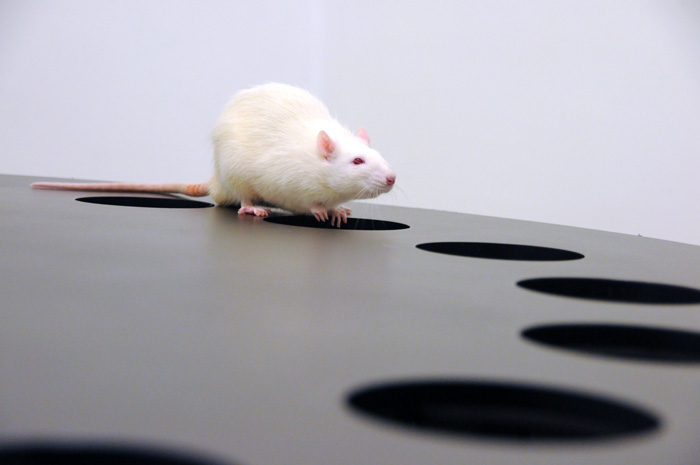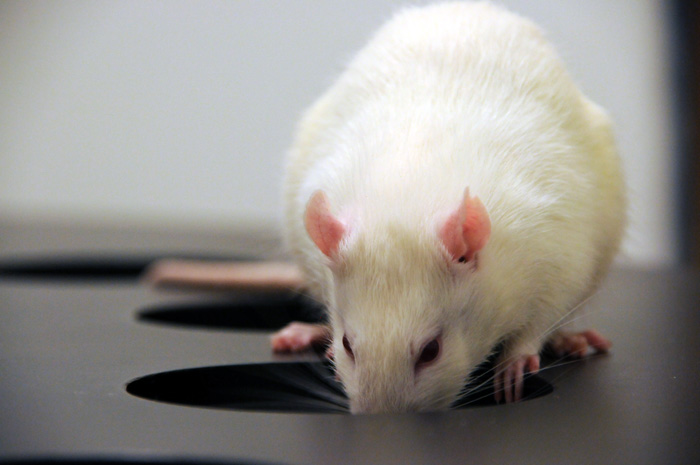Many sleepless nights studying for the final exams, and when the day comes "just when you are in front of the paper" your memory blanks out! This is not a fictional story, it is reality, and it occurs more frequently than what people believe. The explanation is simple: "When information is received under stress, it is easily forgotten," affirms Alejandro Múnera, director of the Behavioral Neurophysiology Research Group from Universidad Nacional de Colombia.
For six years, Múnera, along with his colleagues, has been investigating the effects of stress in the functioning of memory. For doing this, the scientists have used worldwide recognized psychological experimentation tools, and they have developed their own models in lab rats for the analysis of acute stress.
Some of the results reveal that when tension is introduced in any of the learning process stages (motivation, knowledge, comprehension, application, validation), the effects on knowledge retention are adverse.
A memory is a trace each experience prints in the brain, and it is expressed by behavioral changes in each individual.
Although the neuronal process has not been completely understood, it is believed that the repetition of circumstances in the same place where the experiences took place reactivate memories. The Neurophysiology Group proved this phenomenon in the following experiment.
Stressed rodents
During the first stage of the study, the rats were induced to follow instructions by using a psychological tool called Barnes maze, which is used to assess spatial learning and memory.
It is a 90 centimeters construction in which the rodents are introduced. "The test involves making the surface of the maze aversive using bright illumination and loud noise levels over 90 decibels. The animal is given the opportunity to escape the maze surface by crawling through the correct hole, under which is located a safe box," affirms the researcher.
Two groups of rats were used for this experiment. The first group was exposed to long periods of pressure (between 1 and 4 hours) before entering the maze. "We achieved this reaction by locking the rats up in plastic tubes where they could only breathe and move their legs. We know they were stressed because when we measured corticosterone, a stress hormone that is produced by rats and humans, in their blood the levels were high: they went from 80 nanograms per milliliter to 250 or 300," asserted Múnera.
Agility during learning
The Barnes maze consists of a circular table with 17 circular holes around the circumference of the table. Under each hole is a slot for a box, called the drop box. The goal of the maze is to reach the drop box, where the animal can shelter to escape from the noise and light.
At the beginning of the tests, the stressed rats took almost four minutes to find the hole with the drop box. Those that could not do it, were helped by the scientists in an action that was repeated eight times, with five minute intervals. "We called this sequence learning session," explains the researcher.
As a result, it was detected that with each repetition the time spent by the rats to find the box and enter into it was reduced. While in the first sequence they took 240 seconds to find it, in the last one they took only 60 seconds. Besides, the number of mistakes (when they chose the wrong holes) was reduced; from 15 it dropped to 5 at the end.
According to Múnera, the session was repeated the next day with the two groups of rodents (the stressed ones and those that were in normal conditions): "We observed that the rats perfectly remembered how to find the hole to the box and they did it in less than a minute, with less than five mistakes. What is still uncertain is if they really learned where the right hole was."
For making the test more difficult, the scientist removed the box from the shelter hole. As a result, all the holes of the platform were the same. After that, they put the two groups of rodents eight times to complete the learning sequence, while they counted the number of times the rodents introduced their noses in the holes.
"We observed that the rats that had not been exposed to stress the day before insisted in introducing their nose in the hole that used to have the box. This indicates that they did not forget that the exit hole was there. On the contrary, although the stressed rats learned how to escape from the maze, when we removed the box, they tried to find the exit hole in the same way in all holes.
As a result, it was determined that the stressed animals did not clearly remember the way out, opposite to the control group, which did it quickly," asserted the researcher.
Remembering
Once the rodents learned to acknowledge the space (the maze), they were exposed to acute stress for 24 hours after the training in order to determine their capacity to remember. "We observed that memory extinction is faster in stressed animals that in controlled ones, which shows how stress partially interferes in memory evocation. Besides, stress makes memory more susceptible to change," added Múnera.
Although tension can generate damages to systems and organs such as the brain, there is something positive from this analysis: according to the neurophysiologist, stress is a fundamental tool to modify previous experiences and quickly learn new ones. "It makes knowledge acquisition difficult and makes it volatile, but it also offers the possibility of easily acquiring new information," affirms the researcher.
When making the analogy to human behavior, these results are important, since they will help understanding how some individuals have a better capacity to adapt to new environments. Some future studies may reveal this.
 Correo Electrónico
Correo Electrónico
 DNINFOA - SIA
DNINFOA - SIA
 Bibliotecas
Bibliotecas
 Convocatorias
Convocatorias
 Identidad UNAL
Identidad UNAL




